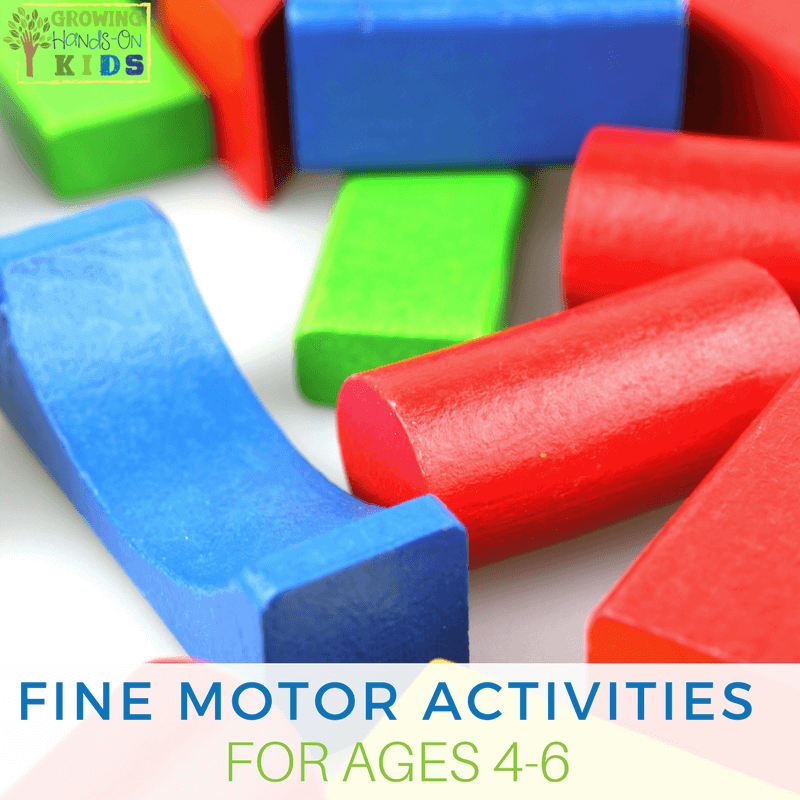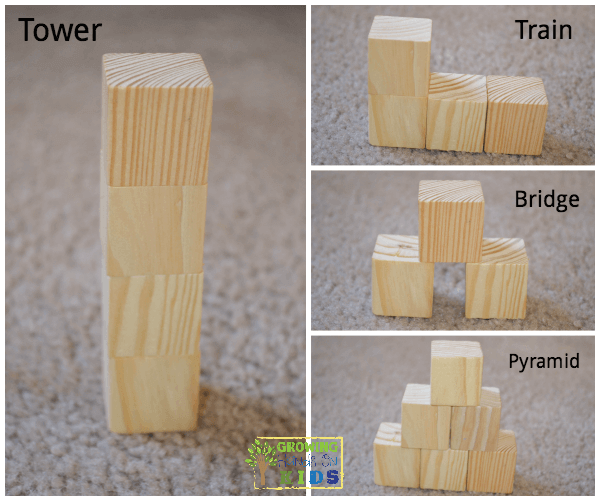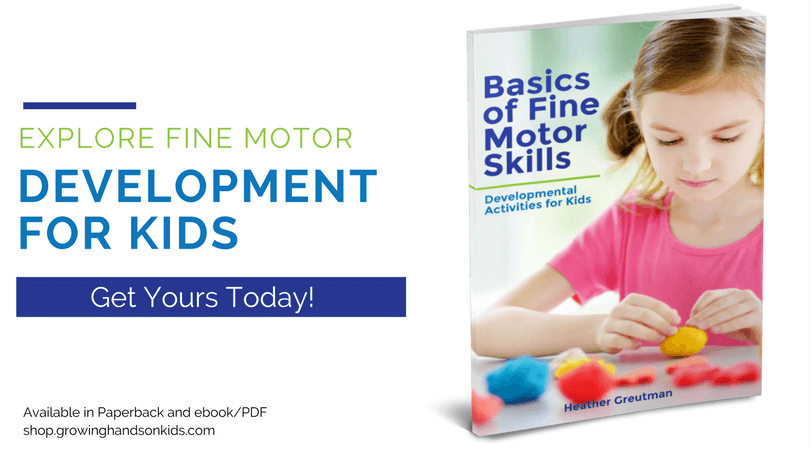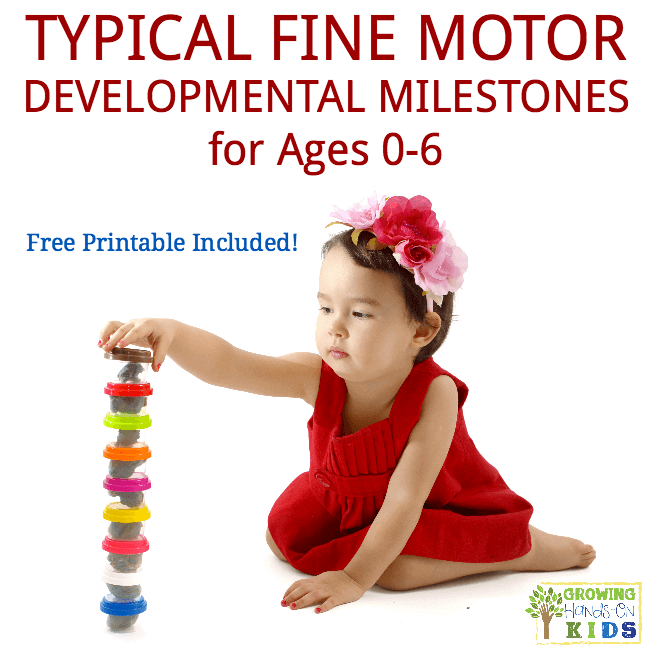Fine Motor Activities for Preschoolers – Ages 4-6
Affiliate and Referral links are used below to promote products I love and recommend. I receive a commission on any purchases made through these links. Please see my disclosure policy for more details. As an Amazon Associate, I earn from qualifying purchases.
Today we are going to be looking at typical fine motor activities for preschoolers, or ages 4-6. This was my favorite age group to work with when I was working in the school system as an Occupational Therapy Assistant.
Fine Motor Activities for Preschoolers Age 4
- puts a key in a lock and opens it
- can use scissors to follow and cut both straight and curved lines
- can manage buttons, zippers, and snaps completely
- can draw and copy a cross (one vertical and one horizontal intersecting lines)
- can hold fork using his fingers
- can feed himself soup with little or no spilling
- folds paper in half, making sure the edges meet
Remember that these skills are an ongoing learning process through age 4. By the time your child reaches age 5, these skills should be learned and mostly mastered. Each child is different. If you have concerns please seek advice from your pediatrician.
A great way to practice buttons, zippers or snaps is to have them dress their dolls or stuffed animals. You can make it very inexpensive by making the clothing yourself and adding the buttons or buying some clothes if you want. Remember to start with large size buttons and have them practice at a table. Once they master large buttons, move to medium and then small size. Once they have mastered the animals and dolls, move them to a vest or their own clothing.
Cutting and folding paper can be incorporated into a craft project quite easily. Letting your preschooler use and get used to scissors is the biggest thing you can do.
While cutting, make sure that your child is holding the scissors in a thumbs-up position as well as holding the paper with the other hand with their thumb facing up.
When they are practicing lines and shapes, make sure they do not use the large jumbo size crayons. The large crayons force their fingers farther apart than they should be in order to promote a good grasp. Using regular size crayons and breaking them in half forces them to have fewer fingers on the crayon and use the correct tripod grasp.
Remember that at age 4 they are still developing a good grasp pattern as well as deciding which hand they are going to use (right or left). Encourage them to use the same hand that they seem to prefer throughout the entire activity. A lot of my kids like to switch when their hand starts to get tired. To ensure their hands get strong, practice practice practice.
Fine Motor Activities for Preschoolers Age 5
- can get dressed completely by himself, and usually tie shoelaces
- cuts square, triangle, circle, and simple pictures with scissors
- uses a knife to spread food items (jelly, peanut butter, mayo etc.), uses a dull knife to cut soft foods
- able to draw and copy a diagonal line
- uses a “tripod grasp” on writing utensils (thumb & tips of 1st two fingers) and uses fingers only (because small muscles of hand have developed) to write/draw/color
- can build a five-block “bridge”
- sufficient bilateral hand coordination to cut out complex pictures, accurately following the outline
- able to copy a sequence of letters or numbers correctly
Fine Motor Activities for Preschoolers Age 6
- able to complete complex puzzles
I went ahead and put age 6 in here because there is only one real area that they improve in fine motor skills which is completing complex puzzles. Kids love puzzles, and you can get kid-size puzzles at Walmart or Target in the children's section near board games.
Block designs are also a great fine motor and visual-motor skill. Being able to do the bridge design with blocks is harder than it seems. The key is that they are able to balance one block on top of two other blocks, without the one on top falling through. So a 5 block design, would be 3 on the bottom, with two balancing on top.
I have many more activity ideas and strategies in my book Basics of Fine Motor Skills – Developmental Activities for Kids.
For more fine motor activity ideas check out my Pinterest boards below:
Follow Heather @ Golden Reflections Blog's board Fine Motor Skills Prek & Up on Pinterest.
You May Also Like:

Heather Greutman, COTA
Heather Greutman is a Certified Occupational Therapy Assistant with experience in school-based OT services for preschool through high school. She uses her background to share child development tips, tools, and strategies for parents, educators, and therapists. She is the author of many ebooks including The Basics of Fine Motor Skills, and Basics of Pre-Writing Skills, and co-author of Sensory Processing Explained: A Handbook for Parents and Educators.





My daughter is slightly behind with fine motor skills, so it’s good to have a goal list to check in one. I *know* she can do these things, but she gets frustrated too easily and gives up. We’ll need to be working on that!
Such great details and tips, Heather!